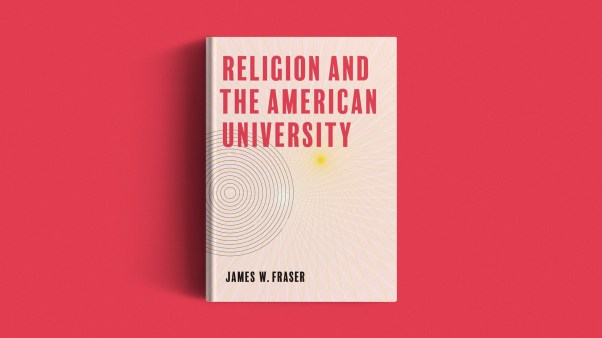Christian liberal arts colleges are facing sustained challenges today from declining enrollments, increased costs, and stiff competition for contributor dollars. Their biggest problem is double-edged: a shrinking pool of 18-to 23-year-olds means fewer potential freshmen each year. And because these institutions rely heavily on student fees to meet budget requirements, money is growing ever tighter.
In one case, these factors led to a merger between two institutions. Barrington College, an independent school in Massachusetts, found itself in competition with Gordon College, located about 80 miles away. A relatively small evangelical population in the area virtually guaranteed that both institutions could not flourish simultaneously.
David Horner, president of Barrington from 1979 until 1987, recognized the futility of maintaining two independent, evangelical liberal arts schools so close to each another. Effective in 1985, the two merged into the United College of Gordon and Barrington. It was not an easy process, particularly for the Barrington community, but observers say more such mergers may await Christian colleges.
In a 1985 study, Horner predicted that by the mid-1990s, as many as half of the institutions belonging to the Christian College Coalition (a cooperative association of 77 colleges) could lose half of their traditional enrollment. In an interview, Horner said, “I have not updated the numbers, and I hope the projection was wrong.” At the same time, he said it is “absolutely not” feasible for all these institutions to continue growing.
To meet this challenge, Christian colleges are responding in a number of ways.
Endowing The Future
Christian colleges differ from secular institutions in educational philosophy, program offerings, and purpose. They raise money differently as well. A 1987 study by Wesley K. Willmer, director of development for Wheaton (Ill.) College, indicates Christian colleges rely more heavily on contributions from individuals, affiliated church denominations, and trustees than their secular counterparts. Secular schools receive more grant money from foundations, business, and government. Few Christian colleges, according to recently retired Christian College Coalition President John Dellenback, receive substantial research grants.
Consequently, building an endowment—a large reserve of funds that can be invested to generate income—is an attractive option for many Christian schools. Some college administrators believe it may be the only option. Eugene B. Habecker, president of Huntington (Ind.) College, notes government assistance (particularly for student tuition aid) may become increasingly more difficult to obtain. If this happens, he says, “institutional choices will include watering down ‘missions statements’ in order to receive governmental funds and/or putting in place significant endowments to offset the loss of such monies. My hope is that the latter choice will prevail over the former one.”
Willmer, in his study entitled “Friends, Funds, and Freshmen for Christian Colleges: A Manager’s Guide to Advancing Resource Development,” found 59 percent of coalition-member colleges have endowments ranging from $1 million to $4.9 million. Twenty-five percent reported endowments of less than $1 million.
CHRISTIANITY TODAY asked several college spokespersons about the growth of their institutions’ endowments, and most indicated that it is seen as a crucial element in maintaining financial stability. Ronald W. Moore, vice-president for finance and treasurer of Anderson (Ind.) College, noted that his institution’s endowment has increased by $6.5 million in the past ten years to $9.3 million.
By the end of 1990, explained Moore, Anderson College projects a $20 million endowment. “The greatest financial challenge facing our institution is a plateaued student enrollment, which therefore calls for an inordinate additional cost load being placed on student tuition.… It is a question of how long we can maintain our market with the higher level of tuition increases.”
Eastern Mennonite College and Seminary has seen a 300 percent increase in its endowment over the past decade, to a total of $2.4 million. Southern California College’s endowment of $3.6 million is projected to grow to between $ 12 million and $15 million by 1992. And endowment funds at King College in Bristol, Tennessee, have increased by 180 percent to $5.6 million.
In contrast, Roberts Wesleyan College in Rochester, New York, has a very small endowment and is placing little emphasis on building it. President William C. Crothers observed, “We have a living endowment represented by hundreds of donors across the country who have committed themselves to making a substantial gift each year, which represents the equivalent of income from an endowment.”
Endowments may solve one philosophical problem for these institutions while raising new ones. They make a college more self-sufficient in terms of providing tuition assistance to students who need it, so the question of accepting federal or state grants with strings attached is minimized. But some donors see a conflict between relying on God and placing inordinate trust in endowment funds. Habecker, at Huntington College, addresses this in his book The Other Side of Leadership. He recommends colleges tithe their endowment to other Christian organizations and avoid hoarding wealth.
New Recruits
Even when they accumulate a significant endowment, evangelical colleges tend to rely heavily on student fees to meet their operating expenses. Willmer pointed out that Wheaton College has one of the largest endowments of any coalition school, yet 72 percent of its budget is drawn from tuition, room, and board. Because of this, Wheaton and other schools are embarking on campaigns to attract students from outside their regular constituencies. Willmer said Wheaton is recruiting among evangelicals in mainline denominations. “There are a lot of believers in mainline churches, yet not too many of them have Christian college opportunities or they don’t think in those terms,” Willmer said.
Dellenback agreed that a large untapped market for Christian colleges exists. He said surveys indicate that each year approximately 250,000 high school graduates could fit the requirements of coalition schools—about ten times the total number of students entering all Christian colleges. A trend away from separatism—which characterized many evangelical institutions years ago—may open the doors of schools to students who had not previously considered attending a Christian college.
Along with stepped-up recruitment efforts, substantial tuition increases are planned. Colleges responding to a Christianity Today questionnaire indicated projected increases above the current rate of inflation, ranging from 4.3 percent to 8 percent.
Another way to offset declining numbers of traditional freshmen is to attract adults interested in continuing education, offer courses off campus, or begin graduate programs. While this may offer help for some institutions, Dellenback cautioned that it may involve unanticipated pressures as well: Will Christ-centered schools suffer if a large number of students are not incorporated into daily campus life? Would part-time or off-campus faculty be scrutinized as thoroughly for their faith commitment as regular, full-time instructors?
A Distinct Mission
Attracting students to Christian colleges involves more than good publicity and academic excellence. Most parents and potential students are drawn by the main factor setting these institutions apart from the approximately 3,300 other colleges and universities in the United States: their integration of faith and learning. Institutions that understand and communicate their mission clearly stand the best chance of surviving and thriving in difficult times, observers agree.
William C. Crothers, president of Roberts Wesleyan College, pointed out, “The greatest challenge Christian colleges are facing today is the possibility that Christian parents, because of the cost differential between state institutions and Christian higher education, will fail to see the advantage of the Christian tradition in higher education and thus not be willing to pay the extra cost,” said Crothers.
Communicating a college’s uniqueness may be more important, in the long run, than sustaining growth, according to Wheaton’s Willmer. The bottom line for evangelical institutions, he noted, is “a completely different approach to education that really integrates faith and learning. A Christian college is not just a nice place imparting the same old knowledge. The way it treats information really is different.”
Dellenback pointed to another reason for optimism in the long run: “In the field of higher education, we are seeing some changes. People are turning toward standards and values. When those factors enter the picture, it helps our schools. That is at the heart of what our schools try to be.”
By Beth Spring.










